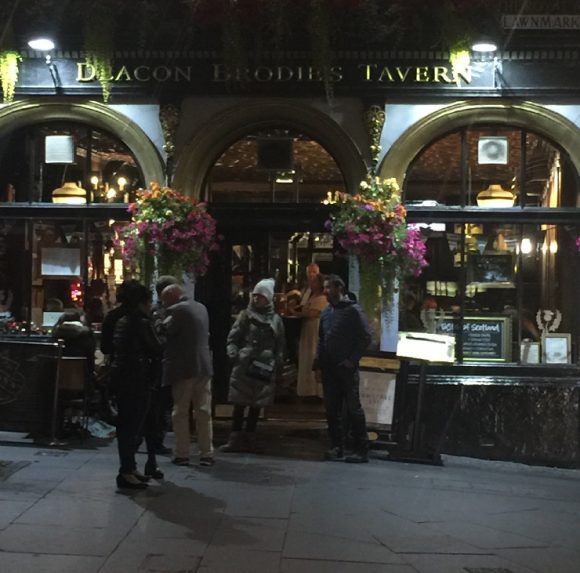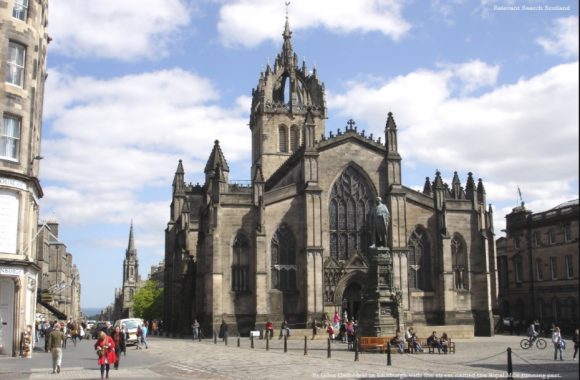Dear Commons Community,
We visited several towns and villages on the East Coast of Scotland. Each town was attractive, however, in my opinion, the village of Elie was the most charming. All the photos on this post were taken in Elie.
Tony

Dear Commons Community,
Today we spent most of the day in the beautiful town of St. Andrews. We visited the University of St. Andrews founded in 1413, which has been the alma mater of many British royals including Prince William and his wife, Kate Middleton. It is a beautiful campus with lots of old stone buildings and lawns.
St. Andrews also is the home of two ruins – St. Andrew’s Cathedral and St. Andrew’s Castle. Both are in major disrepair but still impressive structures and in the case of the Cathedral, surrounded by beautifully maintained grounds.
No visit to St. Andrews would be complete without a visit to the Old Course (golf). It is a magnificant facility and many would say is one of the top golf courses in the world.
Tony
University of St. Andrews
University of St. Andrews
Benjamin Franklin Received an Honorary Degree in 1759
Ruins of St. Andrews Cathedral
Ruins of St. Andrew’s Castle
The 18th Hole at St. Andrew’s Old Course
Dear Commons Community,
We spent the afternoon at the Greyfriars Kirk (church) and kirkyard. This Presbyterian kirk (above) opened on the former site of a Roman Catholic church on December 25, 1620. The interior is interesting with minimal ornamentation except for several beautiful stained- glass windows. The grounds around the kirk are mostly a graveyard that is very well kept and is a pleasant place for a walk. The graveyard and the George Heriot’s School next door are said to be inspirations for settings and names used by J.K. Rowling in her Harry Potter books. According to a guide in the Kirk, Rowling lived in the neighborhood and had children who attended the School. She also did much of her writing at local pubs.
The Martyrs Memorial in the graveyard commemorates 18,000 people killed between 1661 and1680 during a period of civil war and religious persecution.
There are a number of prominent people buried in the graveyard such as William Smellie, the editor of the first edition of Encyclopedia Britannica. The gravestone is inscribed with words from his friend, Robert Burns: “Here lies a man who did honour to human nature.”
Greyfriers Bobby was a skye terrier who supposedly spent 14 years guarding the grave of its owner from 1868 to 1872. Greyfriers Bobby is a cult figure in Scotland and there have been books written and movies made telling this story. The statue in the photo below greets patrons of the Greyfriers Bobby Inn.
A pleasant afternoon in one square block of Edinburgh!
Tony
Interior of Greyfriars Kirk
Graveyard Where Some Gravesites Abut the Adjacent Building
Graveyard Path
Martyrs Memorial
William Smellie Grave
Greyfriars Bobby
Dear Commons Community,
Yesterday we spent the entire day touring south of Edinburgh.
Our day started with a stop at Rosslyn Chapel, made more famous by Dan Brown’s mega-best seller, The DaVinci Code. Some scenes for the movie were shot on location in the cellar vault. The main area has lots of interesting sculptures and figures. Before The DaVinci Code, the number of yearly visitors was approximately 34,000 (2001). Since 2006 – the year the film came out – the yearly average is more than 150,000.
Below is a photo of the ruins of Melrose Abbey, built in the 12th Century. An outside grave supposedly contains the heart of the Scottish king and hero, Robert the Bruce.
We then crossed the border between Scotland and England to visit to the ruins of Hadrian’s Wall built in the 2nd century. It ran horizontally across from the banks of the River Tyne near the North Sea to the Solway Firth on the Irish Sea, and was the northern limit of the Roman Empire. According to our tour guide, the wall originally was about 18 feet high and 9-feet across for most of its 73-mile length. Along the wall, the Romans built fourteen forts. The ruins of one these (Housesteads Fort) are depicted in a photo below.
The last stop on the tour was the ruins of Jedburg Abbey built in the 12th Century.
We learned a lot of history today!
Tony
Interior of Rosslyn Chapel
Melrose Abbey
Hadrian’s Wall
Ruins of Housesteads Roman Fort
Ruins of Jedburg Abbey
Dear Commons Community,
After lunch, Elaine and I went for a walk along Canongate, the lower third of the Royal Mile in Old Town. The photo above is Calton Hill taken from one of the lookouts just down from Canongate. Calton Hill has a number of monuments to the likes of Robert Burns and Horatio Nelson.
Below is a rooming house built in the 1490s where the Protestant reformer John Knox supposedly lived for a while and died. Tolbooth Tavern with the large clock hanging on its rightside was built in 1820 and remains a very popular pub.
The University of Edinburgh has a campus on Canongate that houses several schools and programs including the Old Moray House, the School of Education and the Centre for Open Learning. Behind the campus is a famous plateau known as Arthur’s Seat. It was described by Robert Louis Stevenson as “a hill for magnitude, a mountain in virtue of its bold design”.
The next photo below is Canongate Kirk (kirk is another name for church). It was built in 1688 and ordered by King James VII. Outside the kirk is a bronze statue of the poet Robert Fergusson who died prematurely at the age of twenty-four.
A fine afternoon of walking. Tomorrow we are off to Hadrian’s Wall and the Rosslyn Chapel.
Tony
John Knox House
Tolbooth Tavern
University of Edinburgh and Arthur’s Seat
Canongate Kirk
Statue of Robert Fergusson
Dear Commons Community,
My colleague and co-author, Chet Jordan and I taped an interview in August for CUNY-TV’s EdCast, hosted by Linda Hirsch. The subject of our interview was our new book, CUNY’s First Fifty Years: The Triumphs and Ordeals of a People’s University. Former President of Brooklyn College and Interim Chancellor of CUNY, Christoph Kimmich who reviewed it said:
“The CUNY story is a great story and the authors tell it well. They pull together the University’s evolution and growth, track the benchmark decisions and the major crises, and explore its interactions with politics. Not too much arcane detail and generally enough background to satisfy readers who are not CUNY junkies. Familiar though the story is for me, I still came across things that were new to me. All in all, the authors accomplished much of what they set out to do: a character sketch, with illuminating vignettes of the major players and landmark events along the way. ” – Christoph Kimmich
The progam will air tonight, tomorrow, Saturday and Sunday. You can find further information at: http://www.cuny.tv/show/edcast/PR2006486
Tony
Dear Commons Community,
It was a full day of touring with visits to Loch Lomond (above), the Kelpies, the Highlands, and Stirling Castle. Loch Lomond is one of Scotland’s truly beautiful lakes, a bit like New York’s Lake George in the Adirondacks. Tom Weir (below) was a well-known Scottish mountaineer, environmentalist, writer, and television broadcaster, associated with preserving the beauty of Loch Lomond.
At 30-meters high, The Kelpies are the highest horse sculptures in the world. The Kelpies represent mythological transforming beasts possessing the strength and endurance of 10 horses. They also represent the lineage of the heavy horses of Scottish industry such as Clydesdales that pulled the wagons, ploughs, barges and coalships that shaped the geographical layout of the area.
The Highlands of Scotland are the mountainous region in the north. The mountains are majestic and also edge beautiful valleys where sheep and Highland Cattle graze. A side note: our tour guide, Amy, referred to the shaggy, horned critter in the photo below as a “Heelan Coo” not as a “Highland Cow”
The last stop on the tour was Stirling Castle, the home of the Scottish kings and queens such as Robert the Bruce, James III, and Mary, Queen of Scots.
Quite a day of sightseeing!
Tony
Tom Weir Bronze with Loch Lomond in the Background!
The Kelpies with Elaine in the Foreground!
Sheep and Highland Cattle Grazing in a Valley!
Stirling Castle – Home of the Scottish Kings and Queens!
Bronze of Robert the Bruce with Stirling Castle in the Background!

Deacon Brodie’s Tavern
Dear Commons Community,
After dinner last night at a pub called, Deacon Brodie’s Tavern, we went for a stroll through the Old Town. The photo immediately below of the white building and bluish dome is the Bank of Scotland established in 1695. The other photos are of other popular sights and streets in the town. On corners, you can find bagpipers playing for contributions.
Tomorrow we are off to the Highlands.
Tony
The Bank of Scotland
George IV Bridge – Bank Street
Edinburgh Castle
Camera Obscura Museum
Dear Commons Community,
Elaine and I arrived in Edinburgh this morning. We are staying at the Fraser Suites in the heart of the Old Town just a few yards from High Street.
We took an afternoon walk along High Street, part of The Royal Mile, the main thoroughfare of the Old Town. St. Giles Cathedral, old bronze sculptures, and some narrow alleyways characterize this pedestrian, cobblestoned street.
Tony
High Street

St. Giles Cathedral
High Street
Bronze of Adam Smith
Old Alleyway